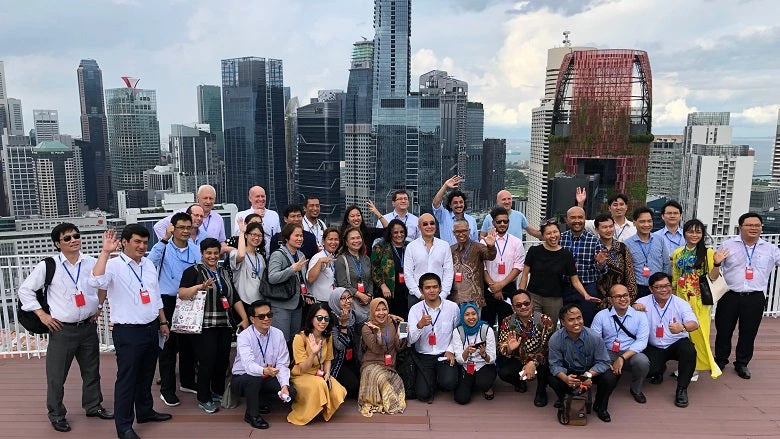 Participants of the first Singapore Technical Deep Dive visiting the roof terrace of the Pinnacles public housing project.
Participants of the first Singapore Technical Deep Dive visiting the roof terrace of the Pinnacles public housing project.
I grew up in Singapore in the 1980s, and left for Perth, Australia in the early 2000s. Upon returning to Singapore again in the mid-2010s, I found that much of the city’s dynamism has remained, yet so much of the built environment has changed. With its constant urban renewal and redevelopment over the decades, I felt almost like a tourist in the city I grew up in.
Both Singapore and Perth are ranked as some of the most liveable cities in the world, and indeed both cities are wonderful places to live. However, what struck me the most was the difference in urban density between these cities. As such a small city state, Singapore would never have the luxury of being sprawling, yet the city was able to achieve liveability despite increasing density and population growth.
Density vs. Liveability
The Centre for Liveable Cities’ Liveability Matrix shows the correlation between density and liveability rankings. Based on the matrix, the denser a city, the less liveable it becomes. While less dense cities generally enjoy better liveability rankings, a sprawling city loses the economies of scale that a dense but well-planned and serviced city enjoys.
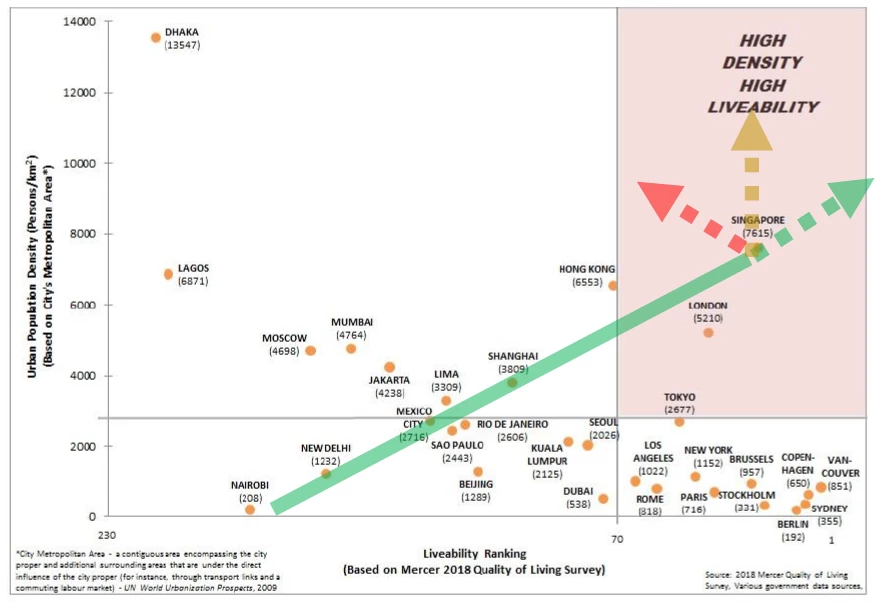
Sustainable planning and management of cities has never been more urgent and pertinent. Currently, 55% of the global population lives in urban areas, generating more than 80% of global Gross Domestic Product (GDP). Much of this economic and population growth is taking place in emerging economies.
The long-term success of any rapidly growing city requires a rethink of planning and sustainability, and how urban services play a role in enabling liveability. To be able to plan and manage a liveable city, there must be active collaboration between levels of government and across agencies to ensure urban services are delivered efficiently and effectively.
Singapore’s Success
Singapore has a population of 5.61 million, and spans an area of 719 km2, with a density of 7,800 persons/km2. It has limited natural resources and requires land to meet essential needs of accessibility, connectivity, defense, and basic services. In the early days of independence in the 1960s, Singapore experienced many of the urban challenges growing cities face today: overcrowding, slums, traffic congestion, environmental pollution, floods, and water shortages. As documented in the Singapore Liveability Framework, Singapore managed to overcome many of these challenges through the principles of integrated master planning and development, and dynamic urban governance.
Many of the policy trade-offs and lessons from Singapore’s urban development experience can be useful to others looking to achieve a highly dense yet liveable city. As such, the World Bank collaborated with the Centre for Liveable Cities and Infrastructure Asia of the Government of Singapore to deliver the Singapore Technical Deep Dive: Sustainable Urban Planning and Management 2019 program, to share some of these insights with our clients.
Singapore Technical Deep Dive
From 17-21 June 2019, participants from the Philippines, Vietnam, Indonesia, Romania, Uzbekistan, and Saudi Arabia visited Singapore to build knowledge, skills, and solutions to improve sustainable urban management.
In designing the program, special attention was given to match the strengths of Singapore’s experience to the areas of urban development and financing that were most pertinent and relevant to these specific countries. Areas of focus included sustainable and liveable cities, integrated urban planning and development, harnessing technology, infrastructure and municipal financing, and action planning.
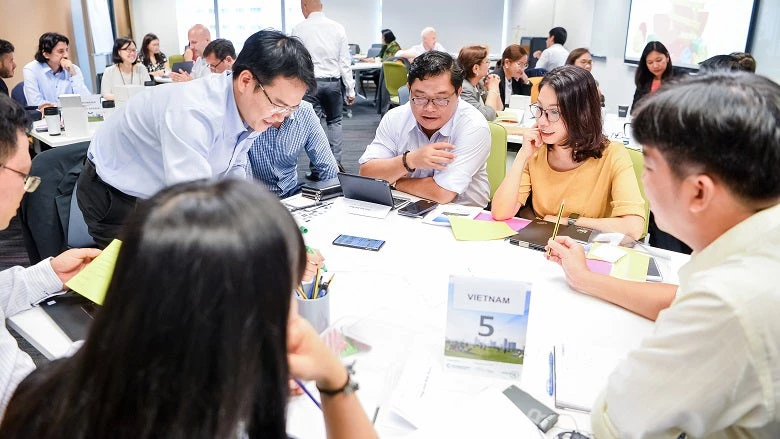
During the week, participants interacted with policymakers, subject matter experts and ‘urban pioneers.’ They also had the chance to interact with solution providers with international best practices through the coordinating agency and program partner, Infrastructure Asia. Discussions revolved around liveability, urban planning and management, sustainable environment, geospatial technology in land management, and infrastructure finance. Each delegation presented an action plan that they would take back to improve the cities they represent.

Some Singapore Technical Deep Dive Impacts
The Indonesian delegation consisted of representatives from municipalities, coordinating agencies at the provincial level, and national-level agencies. Such a broad range of representatives across different levels and sectors of government provided the conditions to start discussing issues collectively. The group described the institutional challenges they face and emerged by the end of the week with a united voice, committed to working with each other to deliver better outcomes for their country.
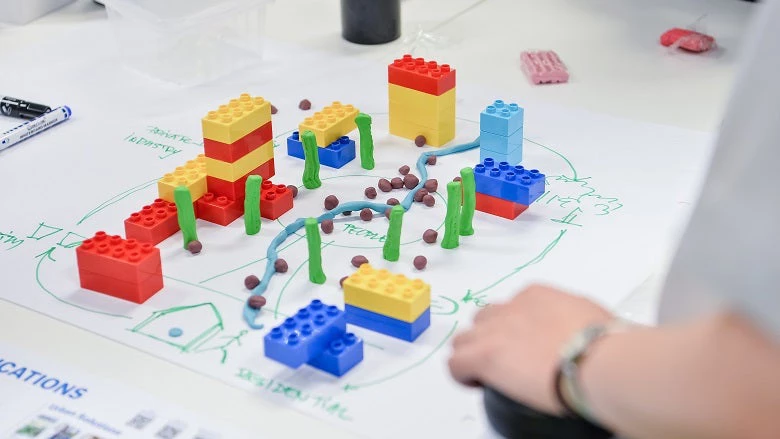
Participants from the Philippines took lessons from the program to further develop the scope and approach of an ongoing disaster risk and tourism project supported by the World Bank.
Through our existing engagements with governments in the region, we can identify needs of cities and develop an ongoing technical deep dive program pipeline for our clients in the region and beyond.
Long Term Engagement
Beyond this training, the World Bank Group’s Singapore Infrastructure and Urban Development Hub seeks to provide continued and long-term benefits to our clients by further partnering with the Government of Singapore. This partnership focuses on: co-hosting international flagship events to build knowledge and awareness; country and sector specific partnerships; and collaboration on projects.
Some might argue that Singapore’s uniqueness makes it difficult to apply its lessons to other cities. However, with increasing pressure on cities to be denser, yet perform better, perhaps some of the principles that enabled Singapore’s development success are indeed worth sharing.

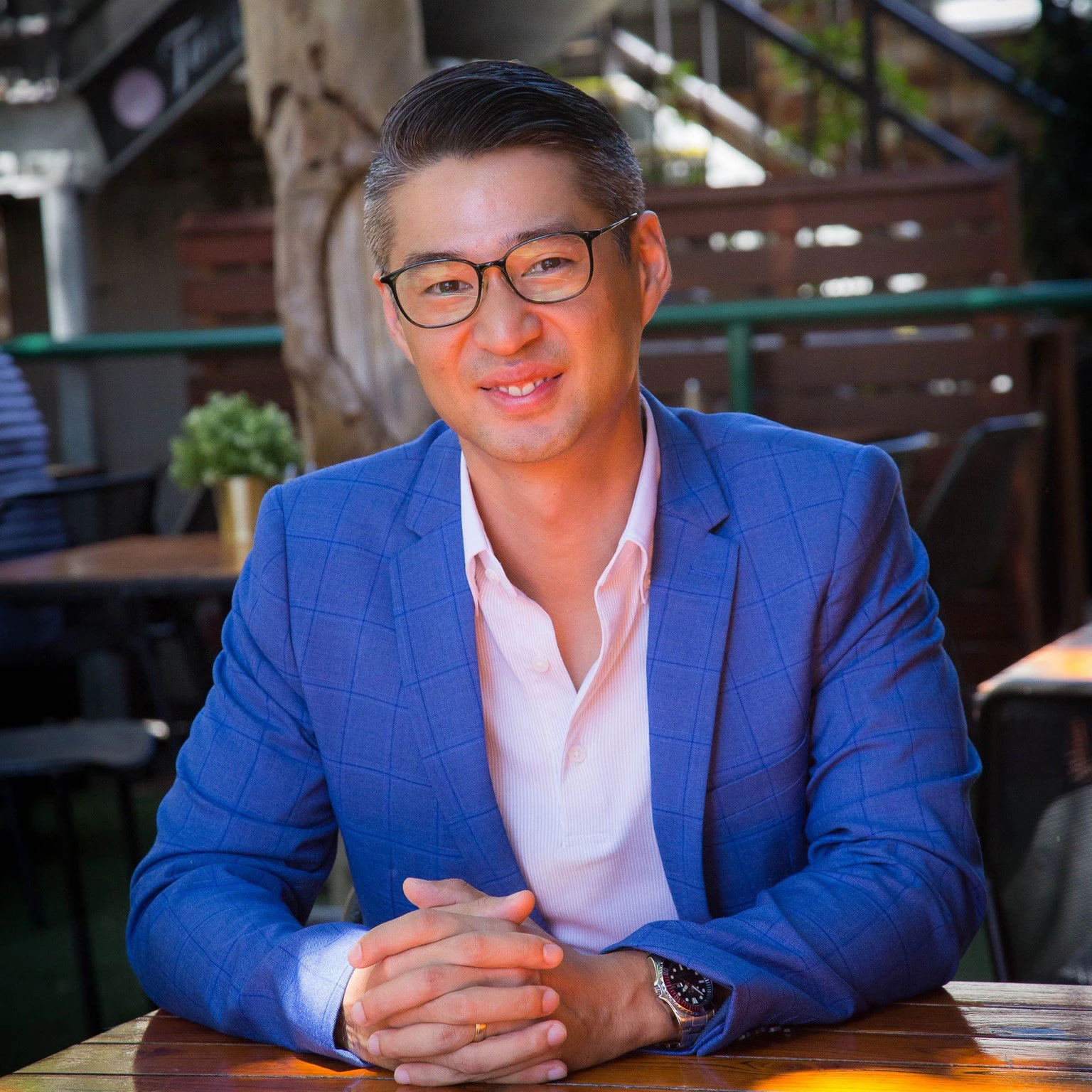
Join the Conversation